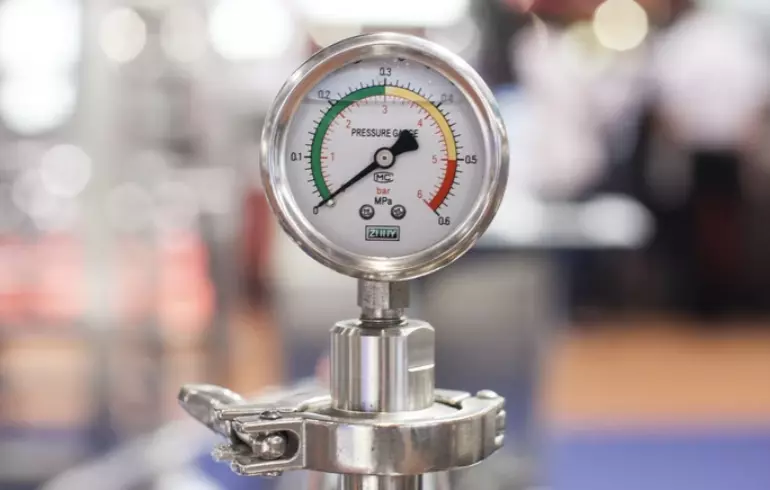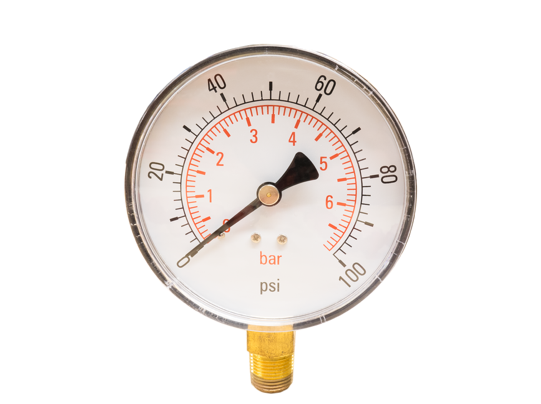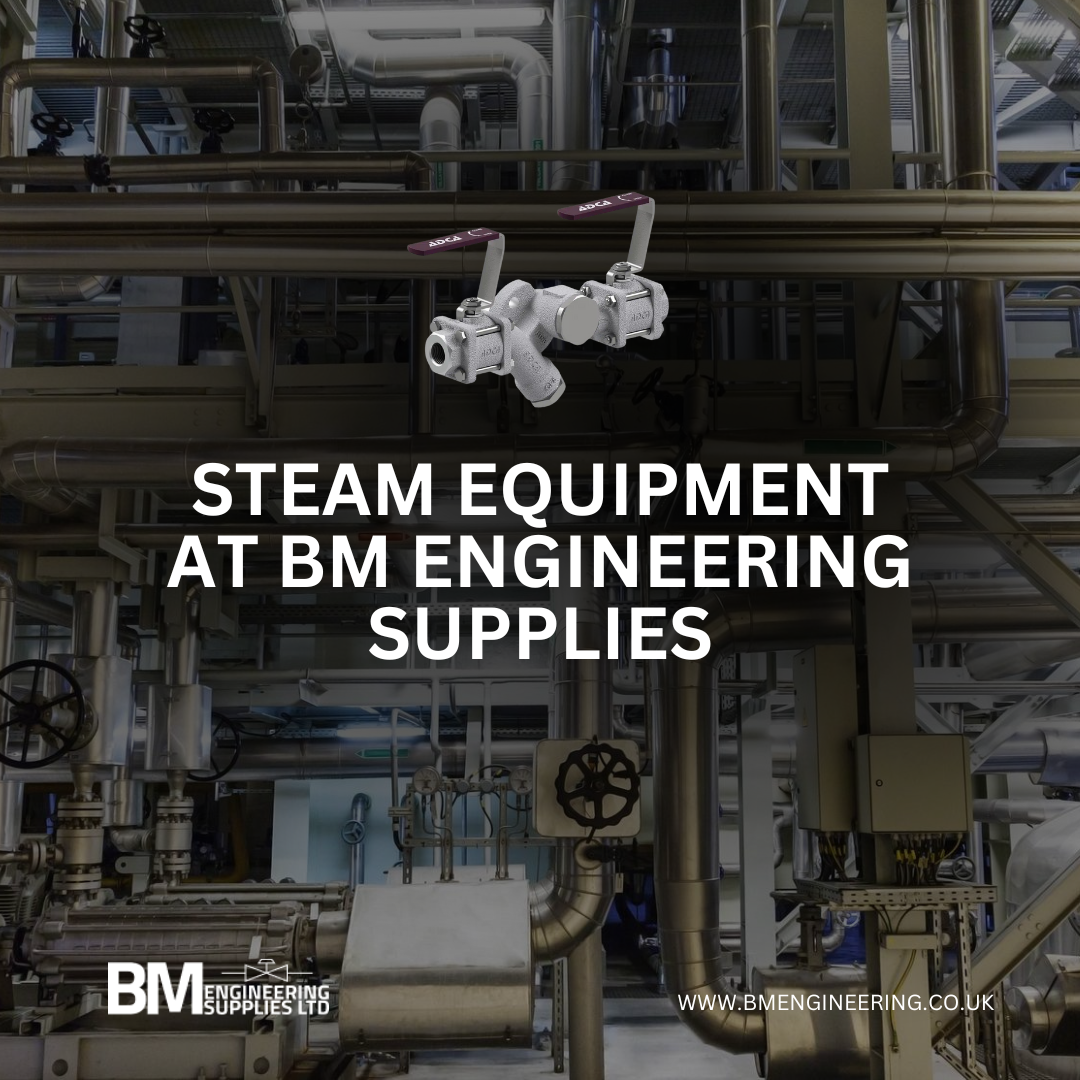
What are the different types of pressure gauges and which applications need them?
Pressure gauges are used in a wide range of industries and provide an integral measurement service for many applications. You can find gauges of all kinds, like industrial gauges on industrial measurement equipment and manufacturing machinery. You can also find gauges inside cars and motorbikes, aeroplanes, boilers, and much more. If you’d like to discover the different types of gauges continue reading our helpful guide.
Different types of pressure gauges
A pressure gauge is used for measuring fluid, gas, water, or steam intensity in a pressure-powered machine to ensure that there are no leaks or pressure changes that would affect system performance. The variations in pressure gauges depend on the type of application the gauge will be used in, with different sizes, styles, and types of materials designed to fit specific systems.
There are many different types of industrial gauges and they include:
- Bourdon tube pressure gauge
- Diaphragm pressure gauge
- Capsule pressure gauge
- Absolute pressure gauge
- Differential pressure gauge
- Bellows pressure gauge
- Manometer pressure gauge
- Piezometer pressure gauge
Bourdon tube pressure gauge
A Bourdon tube pressure gauge has an elastic tube that is soldered or welded on one end into a socket. A pressure change causes deflection in the tube, which is proportional to the applied pressure, and is sent to a rotary gear with a pointer. Inside a Bourdon pressure gauge, a curved tube will straighten when pressure is applied. This is indicated by a dial or digital readout.
Diaphragm pressure gauge
A diaphragm pressure gauge is elastic and becomes displaced when pressure is applied. This works based on the same principle as a Bourdon pressure gauge, but it measures pressure using a diaphragm instead of a flexible tube. The diaphragm can measure pressure as high as 40 bar to -1 bar of gas, steam, and fluids. The main use of this kind of pressure gauge is to measure low level pressure.
Capsule pressure gauge
A capsule pressure gauge has two thin, corrugated diaphragms that are sealed tightly around their circumferences. One of the diaphragms has a hole in its centre that allows media to enter. The diaphragms expand or contract when the pressure is applied and this change in shape creates rotary movement that appears on the face of the gauge.
Absolute pressure gauge
Absolute pressure gauges are used to measure pressure independently from the natural fluctuations in atmospheric pressure. A reference vacuum is attached to the side of the industrial measuring equipment. This is not subject to pressure and it has zero pressure with no variation. Unlike other pressure gauges, absolute pressure gauges are not influenced by changes in altitude, making them ideal for use in aeronautics and distillation systems.
Differential pressure gauge
A differential pressure gauge measures the difference between the pressure in two chambers that are separated by an element, which moves back and forth with the changes in pressure. Movement of the element causes the pointer on the gauge face to move or provides a reading on a digital display.
Bellows pressure gauge
Bellows pressure gauges are sensitive and are used for low pressure applications. The bellows in a bellows pressure gauge is made of thin springy metal connected tubes that form an accordion-like shape, which is sealed in the free end of the gauge. When pressure is applied, it acts on the bellows on the free end, which causes it to expand and produce movement.
Manometer pressure gauge
Manometer pressure gauges measure pressure on a fluid by balancing one column of fluid against another column. This type of pressure gauge is the simplest type and consists of a transparent tube in a “U” shape that is partially filled with a fluid-like mercury. One end of the tube is connected to the location in which pressure is measured, while the other end is open to the atmosphere.
Piezometer pressure gauge
A piezometer is a type of manometer that is used to measure the medium pressure range of liquids. It’s a glass tube that is open at both ends. One end is connected to a pipeline where the pressure of a fluid is measured, while the other end is open to the atmosphere. The tube is attached vertically so the liquid in the pipe can rise into the tube. The pressure reading is indicated by the height of the fluid in the tube.
Where are industrial gauges used?
There are a wide range of industries that make use of industrial measuring equipment, including industrial gauges. The most common industries include:
- Automobiles
- Aeronautics
- Hydraulics
- Food industry
- Oil production
- Chemical industry
Industrial gauges at BM Engineering
At BM Engineering, we supply a wide range of industrial measuring equipment for a variety of industries and applications. Pressure gauges are fundamental components of most processing systems and need to be reliable and accurate to help avoid system failure in everyday operations. Pressure gauges are an important and inexpensive piece of instrumentation that can save you a lot of hassle.
Available in diameters of 50mm to 300mm, our pressure gauges are manufactured in an array of materials and are designed to suit many industries. These include applications in the food and beverage, chemical, pharmaceutical, dairy, brewery, distilling, pneumatic and HVAC sectors to name but a few.
For more information about the types of pressure gauges we offer, or to purchase your pressure gauge from BM Engineering, get in touch today on 0141 762 0657 or via email at sales@bmengineering.co.uk.



